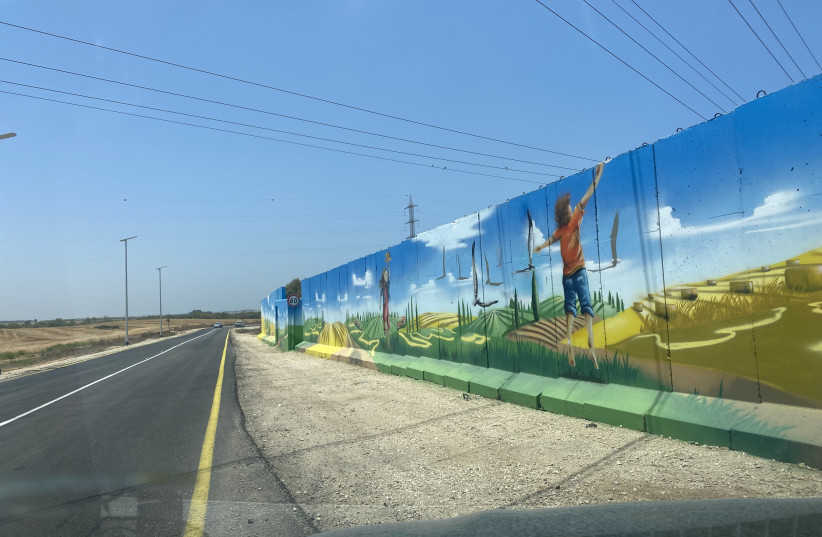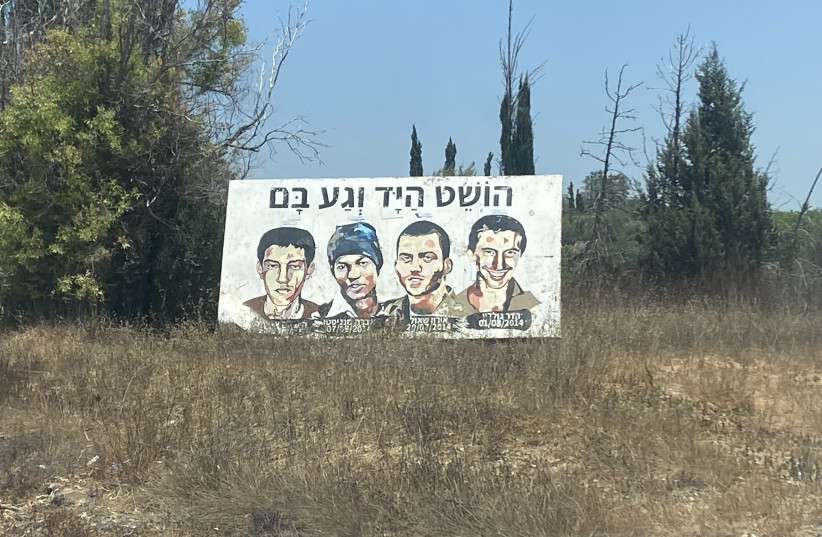In the wake of the IDF’s largest raid on Jenin since the Second Intifada, communities on the Gaza border went about their usual activity on Monday.
An operation by the IDF in Jenin had begun overnight with airstrikes and raids on terrorist groups in the city.
While Islamic Jihad and Hamas have extensive arsenals in Gaza, reports said they had been warned not to escalate and that they were holding their fire in the morning to see how the day developed. That sense of calm was clear on the border in communities such as Sderot, Nahal Oz, Alumim, and Zikim.
In Sderot, city workers were busy adding new roundabouts, trimming olive trees, and going about their work. The city has rapidly developed in the last two decades since the dark days of the Second Intifada and the era before the Iron Dome when rockets terrorized residents without obstruction.
At the Chabad House, which is modeled on the well-known brick Chabad headquarters at 770 Eastern Parkway in New York, guests are welcomed by a hanukkiah made from old rockets that have fallen on border communities here. Sderot was once the center of such attacks when Hamas bombarded the city after Israel’s withdrawal from Gaza in 2005. For a time, the old rockets were kept near the police station.

These days, Sderot is different. Although the city is festooned with shelters near most bus stops, they have been decorated with murals depicting birds, flowers, and fruits.
'You don’t want to think you are living in a war zone'
Chana Melul, a retired headmaster and Sderot tour guide, spoke to The Jerusalem Post in front of a bomb shelter-turned-caterpillar structure in the middle of a playground.
“You don’t want to think you are living in a war zone,” she said, gesturing towards the caterpillar. “Kids want to feel normal.”
Melul added that the community was built on “resilience.”
“Here, we say it’s our house,” Melul said. “You can’t just go and leave every time someone attacks you.”
Down the road in Alumim, a religious kibbutz on the border of Gaza with a little over 400 members, the community was quietly going about its daily routine. Cars marked with numbers lined the community’s parking lot, each one ready to be used by a member of the kibbutz should they require it to go somewhere.
Trucks with agricultural and other products plied the road and waited for the yellow gate of the community to open. From the synagogue, a window overlooks fields in the distance.
A RESIDENT described how he was once caught out in one of these fields during rocket fire. He recalled a memory of lying down and looking up at an Iron Dome battery that was intercepting a rocket above his head. This is life here.
Some live it as a matter of course. Others watch their children grow up traumatized, scared to take a shower in fear of a siren abruptly going off. But life goes on and the houses of the kibbutz are full of members.
Large old trees, their leaves overflowing, provide shade in the hot weather. These were planted when the community was founded in the late 1960s. These days, they have taken root, like so many of the tens of thousands of residents in the communities around the Strip. Some of these communities remember the era back in the 1980s and 1990s when people peacefully shopped in Gaza City and Gazans became like kibbutz members.
Today, people here are waiting to see if anything escalates. On the radio, commentators discussed whether southern Israel might be threatened by rocket fire due to the Jenin operation. Army jeeps drove along the border, but there was no sense of immediate concern or fear in these areas. At the beach in Zikim – where the IDF has cut off access during past conflicts – a strong wind whipped up waves by the shore. A dozen people spread out, getting tan and playing in the rough waters.

On one side is the fence that prevents people from going into Gaza. On the other is the Ashkelon power station. At a nearby pond that is formed by the end of Wadi Shikma, a group of aspiring artists had their easels out, painting the scene.
It was from this area that Avera Mengistu, an Israeli man suffering from mental health issues, crossed into Gaza in 2014. He is still held in Gaza along with another man named Hisham al-Sayed. Hamas also holds the bodies of fallen IDF soldiers Hadar Goldin and Oron Shaul.
On the road from Zikim back to the highway that leads to Ashkelon there are photos of Goldin and Shaul. Near a road leading to Sderot, a mural shows the four men. A stark reminder of the terrorist group that sits on the other side of the fence and that has terrorized these communities for years.
